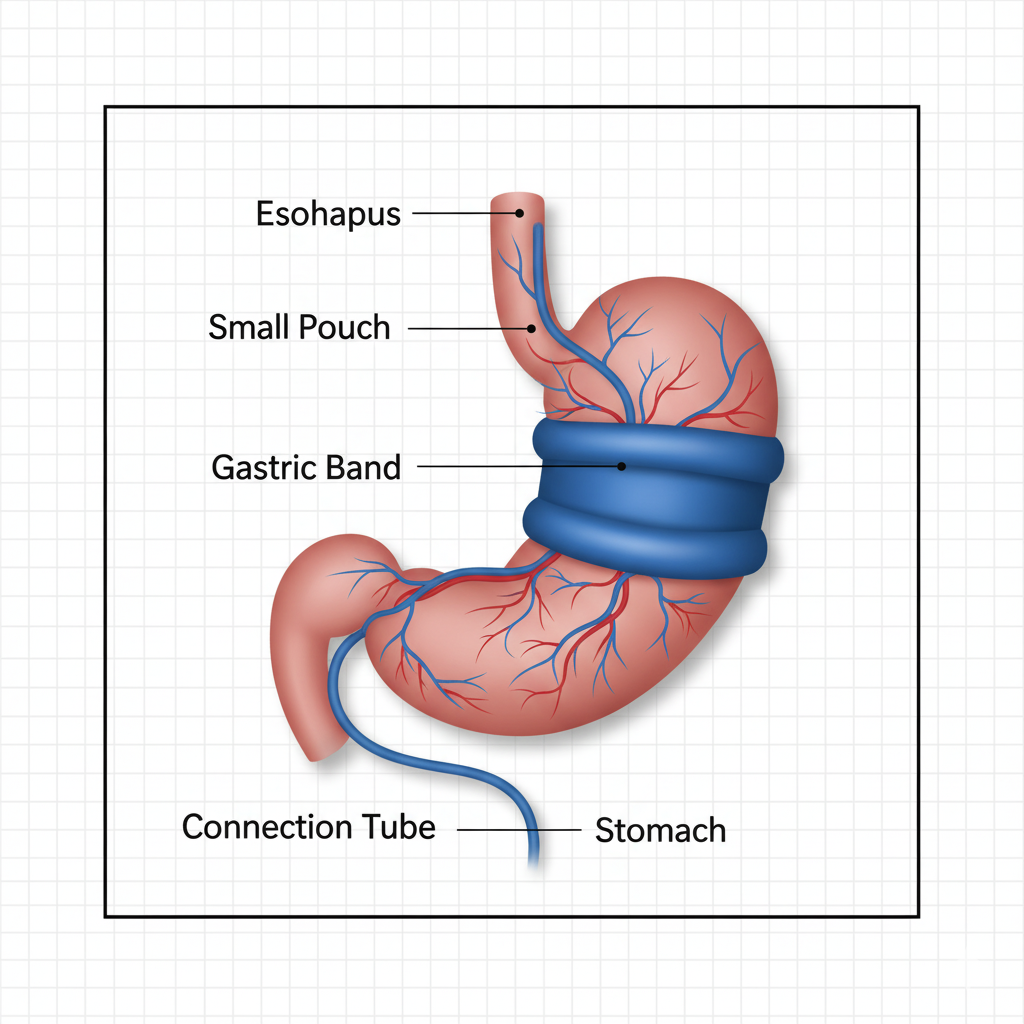The world of weight loss surgery is constantly evolving. What was once the gold standard can quickly be replaced by newer, more effective techniques. For years, the gastric band, often known by the brand name Lap-Band, was the go-to choice for thousands seeking a surgical solution for obesity. It was seen as a less invasive, reversible option that offered a new lease on life.
Today, the conversation has shifted. With the rise of procedures like the gastric sleeve and bypass, the gastric band’s popularity has noticeably declined. This leaves many potential patients wondering: Is it still a viable option? And perhaps more importantly, what is the true gastric band cost, not just financially, but in terms of results and long-term health? This article will break down the numbers, the pros and cons, and help you understand where the gastric band fits into the modern landscape of bariatric surgery.

Understanding the Average Cost of a Lap Band Procedure
When you start researching weight loss surgery, the price tag is often one of the first and most significant factors. The average cost of a lap band procedure can vary dramatically, creating a confusing landscape for patients. In countries like the United States, the price can range anywhere from $9,000 to over $25,000. However, in popular medical tourism destinations like Turkey or Mexico, you might find comprehensive packages for a fraction of that price.
So, what exactly are you paying for? A typical price quote should be an all-inclusive package that covers:
- Surgeon’s Fee: The cost for the bariatric surgeon’s expertise and time.
- Anesthesiologist’s Fee: A separate fee for the specialist monitoring you during surgery.
- Hospital or Clinic Facility Costs: This covers the operating room, your hospital stay, nursing care, and necessary medications.
- Pre-Operative Tests: Essential blood work, imaging, and consultations to ensure you are a safe candidate for surgery.
- The Band Itself: The cost of the medical device.
- Post-Operative Follow-ups: This is crucial for the gastric band, as it requires adjustments (fills) to be effective.
Several factors influence the final cost. Geographic location is the biggest variable, but the surgeon’s reputation and the level of post-operative care included in the package also play significant roles. Always ensure you get a detailed breakdown of what’s included to avoid hidden fees later on.
Is Gastric Banding Still a Recommended Surgery?
This is the million-dollar question. If you ask a room full of bariatric surgeons, you’ll find that the answer to “is gastric banding still a recommended surgery?” is complex. While it is performed far less frequently than it was a decade ago, it hasn’t disappeared entirely. Some surgeons still believe it has a place for a very specific type of patient. To understand why, let’s look at the good, the bad, and the reality of living with a gastric band.
The Original Appeal: Pros of the Gastric Band
The reasons the gastric band became so popular are still valid points to consider.
- It’s Reversible: Unlike the gastric sleeve or bypass, which permanently alter your stomach’s anatomy, the band can be removed, and your stomach can return to its original state.
- It’s Adjustable: The key feature of the band is the ability to tighten or loosen it by adding or removing saline fluid through a port under the skin. This allows your doctor to customize the level of restriction over time.
- Less Invasive Procedure: The surgery is typically done laparoscopically and doesn’t involve any cutting or stapling of the stomach itself. This often translates to a quicker initial recovery and a lower risk of certain complications like leaks.
- Lower Risk of Malabsorption: Because the digestive system isn’t rerouted, the risk of nutritional deficiencies is significantly lower than with gastric bypass.
The Modern Reality: Cons and Complications
Over time, long-term data revealed a number of issues that led to the band’s decline in popularity.
Slower and Less Overall Weight Loss: Patients with gastric bands tend to lose weight more slowly and, on average, lose a lower percentage of their excess body weight compared to sleeve or bypass patients.
High Rate of Reoperation: This is the most significant drawback. Studies have shown that a high percentage of patients (some studies suggest up to 50%) require a second surgery within 10 years to either remove the band due to complications or revise it to a different weight loss procedure.
Device-Related Complications: The band is a foreign object in your body, and issues can arise. These include band slippage (where the band moves out of position), band erosion (where it grows into the stomach tissue), and problems with the port or tubing.
Frequent Adjustments Needed: The “adjustability” can also be a con. It requires frequent visits to the doctor for “fills,” which can be inconvenient and costly.
Because of these long-term challenges, many surgeons now favor the gastric sleeve, which has proven to offer more reliable and sustainable results with a lower rate of reoperation.
What About the Gastric Band Removal Surgery Cost?
Given the high rate of reoperation, a critical factor in the total lifetime gastric band cost is the potential expense of taking it out. The gastric band removal surgery cost is an expense many early recipients didn’t anticipate. This procedure can cost anywhere from $3,000 to $10,000 or more, depending on the complexity.
If the removal is simple and there are no complications like erosion, the cost will be on the lower end. However, if the surgeon needs to repair damage caused by the band or if the removal is part of a more complex conversion surgery (e.g., removing the band and performing a gastric sleeve in the same operation), the costs will be significantly higher. This potential future expense must be considered when evaluating if the initial, sometimes lower, cost of the gastric band is truly a “good deal.”
So, is the gastric band still worth it? For the vast majority of patients in 2024, the answer is likely no. The superior results and lower long-term complication rates of procedures like the gastric sleeve have made them the new standard of care.
However, the final decision is deeply personal and should only be made after a thorough discussion with a qualified bariatric surgeon. They can assess your unique health profile, lifestyle, and weight loss goals to determine the safest and most effective path for you. The initial gastric band cost is just one part of a much larger equation. Understanding the potential for additional costs, the required lifestyle changes, and the long-term outcomes is the key to making an empowered and informed decision on your journey to better health.



